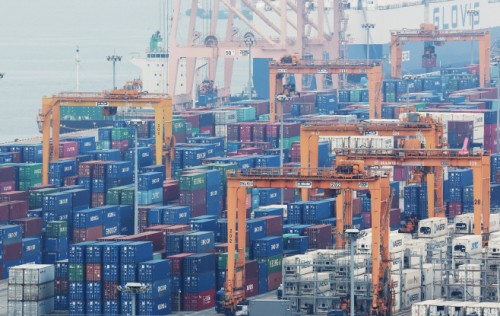 |
| The ADB cited sluggish exports and construction investment as reasons for lowering Korea's 2025 growth outlook. / Source: Yonhap News |
The Asian Development Bank (ADB) has sharply lowered its economic growth forecast for South Korea this year to 0.8%, down from its earlier projection of 1.5%, citing sluggish exports and a decline in construction investment. However, the ADB expects domestic demand to recover in the second half, aided by political stability and expansionary fiscal policies.
According to the Ministry of Economy and Finance on July 23, the ADB’s "Asian Development Outlook – July 2025" report revised South Korea’s real GDP growth forecast downward by 0.7 percentage points. Next year’s growth forecast was also cut from 1.9% to 1.6%.
The new projections are in line with those by the Bank of Korea and the Korea Development Institute (KDI), and slightly below estimates from the OECD (1.0%) and IMF (1.0%).
The ADB cited three key factors behind the downgrade: falling construction investment, weakening exports, and a sluggish real estate market. However, it expects the resolution of political uncertainty following the June presidential election, along with expansionary fiscal measures, to help boost domestic consumption in the latter half of the year.
On trade, the ADB warned that U.S. tariff hikes and global supply chain instability could further weigh on exports. These challenges, including persistent trade uncertainty and tariff burdens, are projected to continue limiting growth into next year.
Meanwhile, the ADB maintained its inflation forecast for South Korea at 1.9% for both this year and next. It noted that stable global oil and food prices, along with reduced demand pressures from slower growth, are helping to keep inflation in check.
For the broader Asia-Pacific region, the ADB now forecasts 4.7% growth for 2025, down from its April estimate of 4.9%. Next year’s projection was also revised down by 0.1 percentage points to 4.6%.
The downward adjustments reflect weakened exports caused by rising U.S. tariffs and global trade uncertainty, shipping disruptions and oil price hikes due to conflicts in the Middle East, and the prolonged slump in China’s real estate market.
Most Read
-
1
-
2
-
3
-
4
-
5
-
6
-
7





















